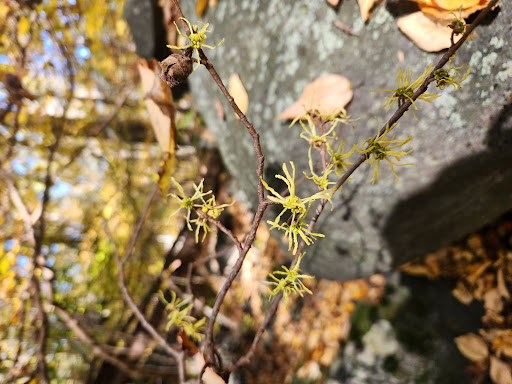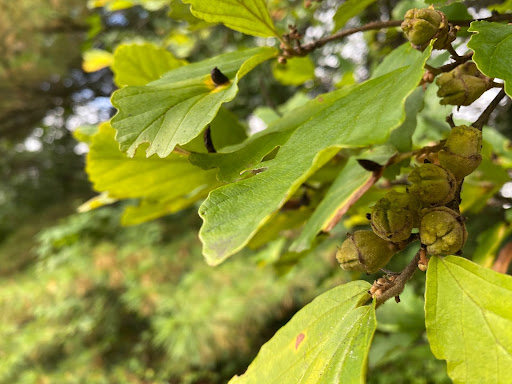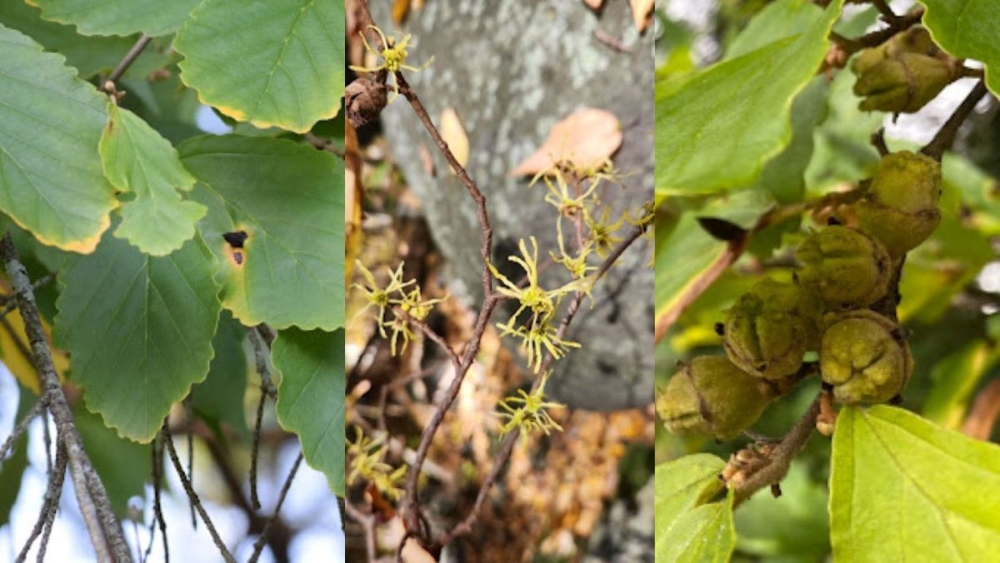The basic strategy for plant life in temperate climates is to maximize above-ground activity during the spring and summer months when warmth, water, and light are plentiful. Yet there is one species of shrub common in Pennsylvania that deviates from that strategy in a major way.
Now that it’s October, it feels appropriate to highlight the Witch Hazel, an underappreciated shrub with both a life history and a common name that ties it to the fall.

What is a Witch Hazel?
Witch Hazel (Hamamelis virginiana) is a relatively common understory shrub, often found growing in the shade of oaks, hickories, and other tree species. On average they grow to be about 12-15 feet tall with a comparable spread. Their size won’t blow you away, but their moderate stature actually lends to their ecological importance. They add to the structural diversity of a forest by providing wildlife with a layer of vegetation between the forest floor and the canopy. They can tolerate a variety of conditions and are readily found in wetter lowland areas and up on drier ridges as well.
The common name “Witch Hazel” stems from one of the shrub’s early uses by Native Americans and early settlers. Apparently, it was believed that twigs of Witch Hazel could locate sources of water. It was thought that if you carried a branch over the ground, it would twist or dip when it was held over a buried source of water. This practice was known as “water witching” (hence the “witch” in Witch Hazel). Water-witching is mostly regarded as pseudoscience, but it has provided this species with an interesting nickname.

The Yellow flowers of the Witch Hazel, blooming when most other plants evolved not to.
Witch Hazel Blooms
One of the most interesting things to note about this species (and what truly ties it to the fall) is when it tends to bloom. Unlike most other plants which flower in the spring and/or summer, Witch Hazel produces flowers in mid to late fall. The plant’s flowers are yellow in color and provide late-season pollinators with some of their last bits of nutrients for the year. They aren’t as showy as many other flowering shrubs, but they do add some color to otherwise drab forests in late fall and early winter.

Witch Hazel fruit capsules, awaiting their opportunity to launch seeds into the surrounding woodland.
Witch Hazel Fruit Capsules Explode
A year or so after pollination, flowers mature into fruit capsules. The fruit capsules eventually split open (often making an audible noise when they do) and launch seeds up to 30 feet away from the parent plant. In more than one sense, Witch Hazel bursts into action when most other deciduous plants have gone dormant.
Between its interesting name, bloom time, and ability to catapult its seeds, Witch Hazel is a truly unique native shrub species. If you find yourself on a nature walk this autumn, keep an eye out for yellow flowers and an ear out for exploding fruit. You’ll have to tread quietly for the latter, but that’s always a good practice anyway.
Thanks for reading, and happy autumn!
Sebastian Harris, Conservation Easement Steward
Curious about pollinators, turtle crossings, reforestation and other woodsy things? Read more Nature Notes.
